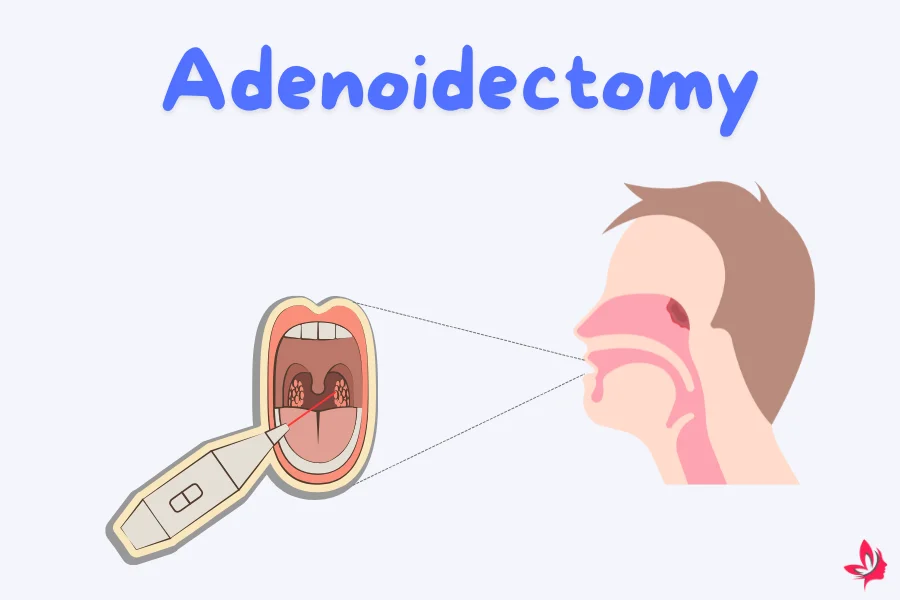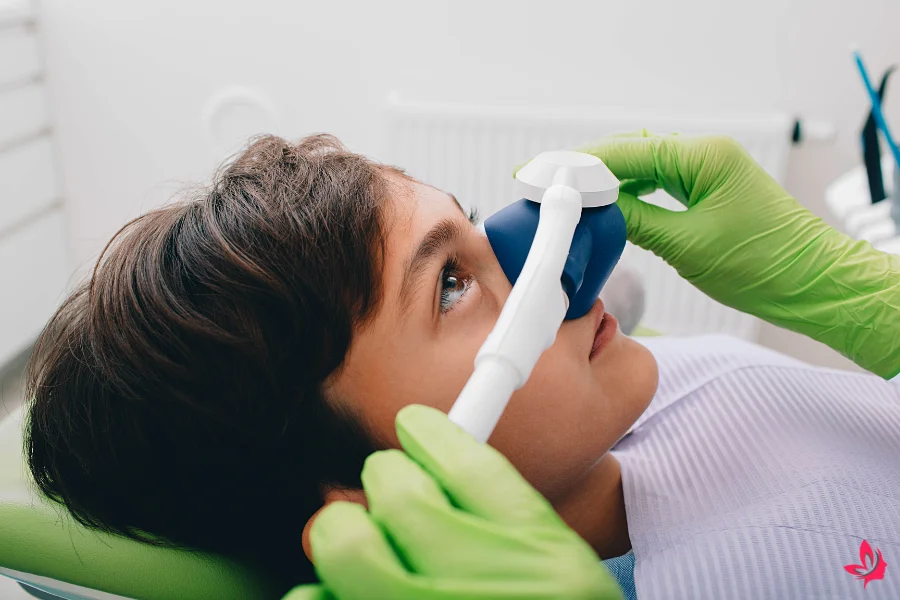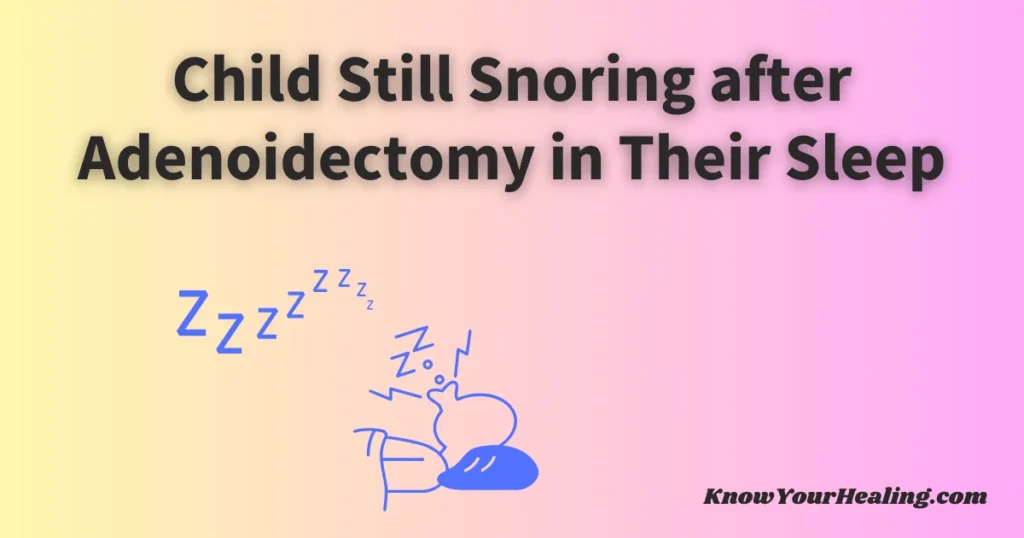Is the child still snoring after adenoidectomy? This concern is not uncommon. Parents often wonder why their child’s snoring persists even after the adenoids are removed.
Snoring may continue due to swelling in the throat or nasal cavities, which usually subsides within a few weeks. Yet, if the snoring lingers, it might indicate other underlying factors that need attention.
Adenoid removal often leads to signs of significantly improved sleep quality. However, some children might experience temporary snoring post-surgery after surgery.
Understanding the reasons behind this can help provide peace of mind and guide parents on when to seek further advice from specialists.
In cases where an evaluation could be necessary. Conditions such as obstructive sleep apnea might still be present.
Consulting with an ENT specialist can also be beneficial. They will conduct a sleep study to assess your condition thoroughly.
This ensures that any other health issues contributing to the snoring are addressed.
Understanding Adenoidectomy

Adenoidectomy involves removing the adenoids to address issues such as obstructive sleep apnea and chronic snoring. It can improve sleep quality, but it isn’t always practical.
In some cases, children may snore or have other symptoms even after surgery. The following subsections explore why adenoid removal is necessary and what outcomes are expected.
Purpose of Adenoid Removal
Adenoidectomy is commonly performed to resolve medical problems associated with enlarged adenoids. When adenoids in the back of the nose are swollen, they can lead to obstructive sleep apnea, nasal congestion, and noisy breathing.
These issues are more frequent in young children and can disrupt sleep or cause behavioral problems.
Surgeons may recommend this procedure in children who are mouth-breathing or have a history of recurring ear infections or glued ears.
In certain situations, removing the adenoids is paired with removing the tonsils for a comprehensive approach.
Bad breath and chronic sore throat can also be linked to enlarged adenoids, making surgery necessary to improve a child’s quality of life.
Expected Outcomes of Surgery
After adenectomy, the primary goal is to alleviate symptoms associated with enlarged adenoids.
The surgical procedure is expected to reduce or eliminate breathing difficulties and restore restful sleep. As swelling decreases, improvement is generally seen within a few weeks.
It’s normal for some throat pain and ear pain to occur post-surgery, requiring pain medication and lots of fluids for comfort.
Despite the surgery, some children may continue to experience child’s snoring or nasal obstruction.
A sleep study might be recommended to assess lingering issues in these cases.
Parents should closely monitor their child’s recovery and communicate with their care team, including the ENT doctor, to ensure proper medical care after surgery.
Post-Surgical Snoring in Children

Post-surgical snoring in children can persist even after procedures like adenoidectomy. Causes can range from incomplete removal of tissues to other underlying conditions. Evaluation is crucial to determine appropriate interventions.
Common Causes of Persistent Snoring
Children who undergo adenoidectomy may continue to snore due to several factors. One common cause is incomplete removal of adenoid tissues, which can still block the airway.
Younger children are particularly susceptible to this issue, as the sizeable adenoid area may require additional surgery.
Another possibility is that the child is experiencing obstructive sleep apnea, which can manifest as chronic snoring despite surgery.
Factors such as a deviated septum or enlarged tonsils can obstruct airflow in the back of the throat, leading to loud snoring.
Nasal congestion from allergies or other medical conditions can also contribute to ongoing snoring. Allergies can inflame the nasal passages, causing nasal obstruction that leads to mouth breathing and noisy breathing during sleep.
Evaluating Ongoing Symptoms
If a child snores after adenoidectomy, a thorough evaluation is essential. An ENT doctor may recommend a sleep study to assess sleep-disordered breathing or obstructive sleep apnea.
This study can provide insights into whether snoring is linked to a more profound sleep disorder or primary snoring.
Pediatric anesthesiologists may also evaluate the effects of general anesthesia during surgery, considering factors such as any remaining airway obstruction.
A follow-up with a throat specialist can help determine whether additional procedures, such as tonsil removal, are needed.
Addressing these issues may require medical care tailored to the child’s needs, potentially involving continuous positive airway pressure therapy or medication to manage nasal congestion.
Regular monitoring is crucial to observe any significant change in the child’s snoring and overall quality of life.
Medical Evaluation after Adenoidectomy

Child snoring after adenoidectomy may persist due to lingering airway issues or other related problems.
Medical evaluation is crucial to ensure a comprehensive assessment and management of any complications. It focuses on checking the airway and discovering any secondary problems affecting the child’s recovery.
Assessing the Airway
Assessing the airway is an essential step when a child snores after adenoidectomy. Doctors often use a sleep study to evaluate sleep quality and identify issues like obstructive sleep apnea.
This condition can cause disruptions during sleep, leading to daytime sleepiness and behavioral problems.
During evaluation, doctors might check the nasal obstruction and see if swollen tissues at the back of the throat contribute to noisy breathing.
A significant change in sleep patterns, such as mouth breathing or restless sleep, indicates the need for further investigation.
A throat specialist may also examine the airway for persistent blockage or enlarged tissues.
Identifying Residual or Secondary Issues
Identifying residual or secondary issues is key when evaluating a child’s snoring post-surgery. Swelling and inflammation in the adenoid area could lead to nasal congestion and continued snoring.
Large tonsils can sometimes be a common cause of ongoing problems.
Other possible issues include a deviated septum or complications from prior surgeries.
Experts might suggest a systematic review to rule out or confirm these suspicions.
The medical care team may also recommend specific fluids, such as apple juice or orange juice, to help soothe a sore throat.
Monitoring for ear pain or signs of inflammation is vital, as these might indicate a need for further medical intervention.
Treatment Options

When a child snores after an adenoidectomy, various treatment options can help. Non-surgical methods are often the first step, while further surgery may be needed for persistent cases.
Non-Surgical Interventions
Non-surgical interventions can be effective for children experiencing ongoing snoring after an adenoidectomy.
Encouraging the child to drink fluids helps keep throat tissues hydrated and reduces irritation.
Managing nasal congestion with saline sprays or allergy medication may also help.
A sleep study could be conducted to assess if the snoring is related to obstructive sleep apnea.
This study helps determine the severity of any sleep disorder.
A humidifier in the child’s room can add moisture to the air, improving comfort and reducing symptoms.
Ensuring a comfortable sleeping position and maintaining a healthy environment can also play a significant role.
These steps often improve the quality of sleep without additional procedures.
Potential Need for Further Surgery
A child may require further evaluation for additional surgical options if non-surgical treatments do not resolve snoring.
An ENT doctor may consider removing the tonsils if they are significantly enlarged and contributing to upper airway obstruction or blocks in the back of the throat.
Some children may need a corrective procedure for a deviated septum or other nasal obstruction.
Conditions such as chronic or habitual snoring, if they significantly impact a child’s life, could also necessitate further surgical intervention.
General anesthesia would be used during any additional surgical procedures, ensuring the child’s comfort.
The decision to proceed with more surgery should be based on a careful assessment of the child’s specific needs and overall health.
Care and Recovery at Home

Parents may be concerned about their child snoring after an adenoidectomy, but proper home care can aid in recovery. This involves attentive home care strategies and knowing when to seek medical attention for issues like sore throats or nasal congestion.
Home Care Strategies
After removing the adenoids, children need plenty of fluids to stay hydrated.
Encouraging a soft foods diet can also help manage throat pain. Foods like apple sauce, yogurt, and mashed potatoes are gentle on the throat.
Rest is crucial during the recovery period. Ensuring the child gets a lot of sleep can promote healing.
A humidifier in the bedroom can alleviate nasal congestion and mouth breathing issues, enhancing the child’s sleep quality.
Pain medication, as a healthcare provider prescribes, can manage discomfort effectively.
It is also important to monitor for any signs of chronic snoring or obstructive sleep apnea,, as these could indicate further issues that require medical attention.
If snoring persists, consulting a throat specialist might be necessary.
When to Seek Medical Attention
Parents should be vigilant for symptoms like excessive throat pain, ear pain, or if the child has trouble swallowing. These might indicate complications requiring further investigation.
Persistent or loud snoring combined with restless sleep could signal a return of nasal obstruction, possibly affecting overall health and quality of life.
In severe cases, a sleep study may be recommended to rule out obstructive sleep apnea or other sleep disorders.
Additionally, if the child experiences significant weight loss, persistent fever, or severe bleeding from the nose, immediate medical care is advised to avoid further complications.
Frequently Asked Questions
Children may continue to snore after an adenoidectomy for various reasons, such as swelling in the throat or other underlying conditions.
It is important to monitor for behavior changes, possible sleep apnea, and signs of infection and consider the potential for adenoids to regrow.
Why might a child continue to snore after an adenoidectomy?
Some children may still snore after an adenoidectomy due to swelling in the throat and nasal passages. Other reasons could include underlying conditions like nasal congestion or unresolved airway issues. In rare cases, structural abnormalities might contribute to persistent snoring.
What are common behavior changes observed in children after an adenoidectomy?
Some children may experience improved energy levels and better sleep patterns post-surgery as snoring and breathing issues resolve.
Temporary behavioral changes might also occur due to discomfort or the effects of anesthesia. Monitoring these behaviors helps parents address any ongoing issues promptly.
Is the presence of sleep apnea possible in a child after they have undergone an adenoidectomy?
While a significant number of children experience relief from sleep apnea symptoms following an adenoidectomy, it can persist in some cases.
This might be due to residual issues like airway blockages or other anatomical factors. If snoring and breathing problems continue, a healthcare specialist should evaluate you further.
What signs should indicate concern for a possible infection following an adenoidectomy in a child?
Signs of possible infection after an adenoidectomy include fever, persistent pain in the throat, and unusual swelling.
Parents should also watch for discharge with a foul smell or color. If these symptoms occur, seeking a doctor’s advice to manage potential postoperative infections is important.
How long does it typically take for improvement in breathing to be noticeable after an adenoidectomy?
Breathing improvement is often observed within the first week after surgery as the initial swelling decreases.
Most children show significant progress in respiration and snoring reduction over the first month.
However, individual recovery times can vary based on the child’s health and the complexity of the surgery.
Can adenoids regrow after being surgically removed, and could this cause a return of snoring in a child?
In some cases, adenoids can regrow after removal. This is especially true in younger children. If adenoids do regrow, they might cause a return of snoring and breathing issues.
Regular follow-ups with a healthcare provider can help monitor and manage these concerns effectively.




